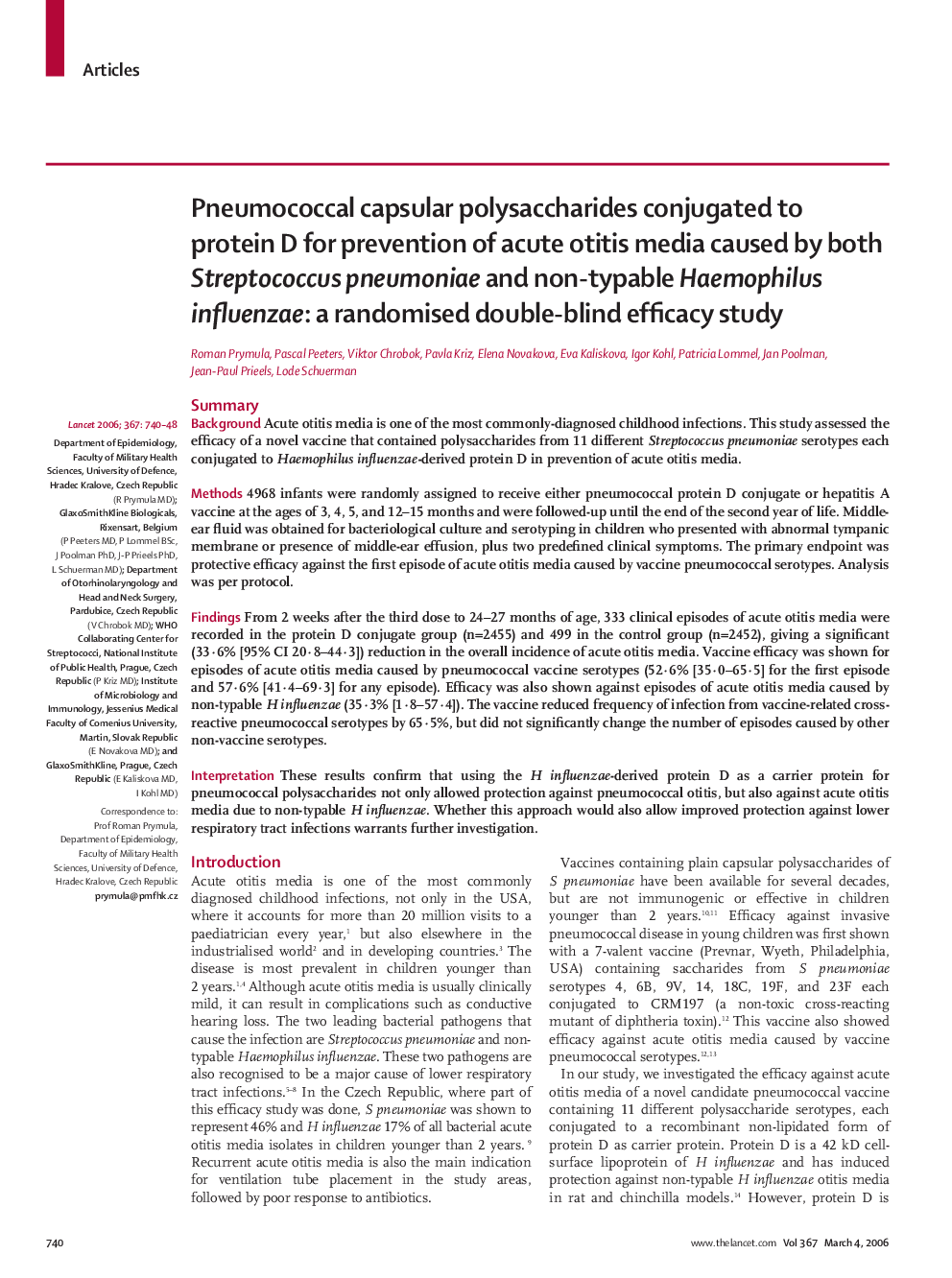| Article ID | Journal | Published Year | Pages | File Type |
|---|---|---|---|---|
| 3500513 | The Lancet | 2006 | 9 Pages |
SummaryBackgroundAcute otitis media is one of the most commonly-diagnosed childhood infections. This study assessed the efficacy of a novel vaccine that contained polysaccharides from 11 different Streptococcus pneumoniae serotypes each conjugated to Haemophilus influenzae-derived protein D in prevention of acute otitis media.Methods4968 infants were randomly assigned to receive either pneumococcal protein D conjugate or hepatitis A vaccine at the ages of 3, 4, 5, and 12–15 months and were followed-up until the end of the second year of life. Middle-ear fluid was obtained for bacteriological culture and serotyping in children who presented with abnormal tympanic membrane or presence of middle-ear effusion, plus two predefined clinical symptoms. The primary endpoint was protective efficacy against the first episode of acute otitis media caused by vaccine pneumococcal serotypes. Analysis was per protocol.FindingsFrom 2 weeks after the third dose to 24–27 months of age, 333 clinical episodes of acute otitis media were recorded in the protein D conjugate group (n=2455) and 499 in the control group (n=2452), giving a significant (33·6% [95% CI 20·8–44·3]) reduction in the overall incidence of acute otitis media. Vaccine efficacy was shown for episodes of acute otitis media caused by pneumococcal vaccine serotypes (52·6% [35·0–65·5] for the first episode and 57·6% [41·4–69·3] for any episode). Efficacy was also shown against episodes of acute otitis media caused by non-typable H influenzae (35·3% [1·8–57·4]). The vaccine reduced frequency of infection from vaccine-related cross-reactive pneumococcal serotypes by 65·5%, but did not significantly change the number of episodes caused by other non-vaccine serotypes.InterpretationThese results confirm that using the H influenzae-derived protein D as a carrier protein for pneumococcal polysaccharides not only allowed protection against pneumococcal otitis, but also against acute otitis media due to non-typable H influenzae. Whether this approach would also allow improved protection against lower respiratory tract infections warrants further investigation.
